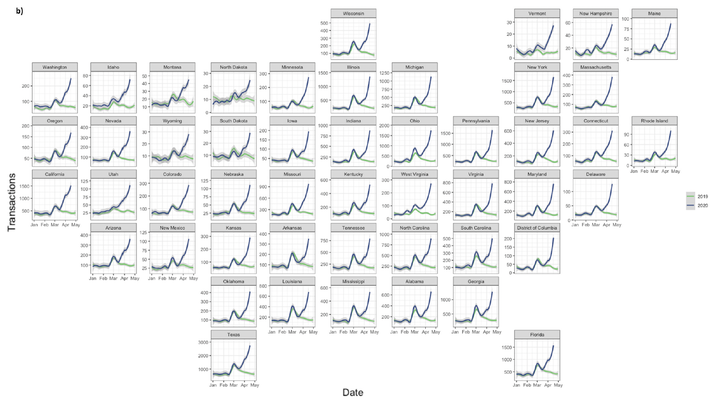How consumer behaviours changed in response to COVID-19 lockdown stringency measures - A case study of Walmart

Abstract
Walmart is a major player in the US retail sector and was one of the grocery corporations that bucked the trend of declining retail sales at the start of the COVID-19 pandemic in 2020. Particularly in the initial stages of the pandemic, governance priorities focussed on restricting the movement of people and closing non-essential retailers and service providers to slow the spread of the virus and keep people safe. This paper investigates the impact of non-pharmaceutical interventions, in the form of lockdown stringency measures, on consumer purchasing behaviours for essential goods over the onset of the pandemic. Focussing on both instore and online sales outcomes for Walmart in the US, we examine changes between pre-pandemic trends in two different sales outcomes, sales transactions and total spend, and trends in 2020. We then employ a series of multi-level regression models to estimate the impact that imposed stringency measures had on these sales outcomes, at both national and state level. Results indicate that nationally consumers were making fewer, larger physical shopping trips and huge increases in online sales was seen ubiquitously across the country. Novel and expansive insights from such a wide-spread retailer, such as Walmart, can help retailers, stakeholders and policy makers understand changing consumption trends to inform business strategies and resilience planning for the future. Furthermore, this study highlighted the value of examining spatial trends in sales outcomes and hopes to influence greater consideration of this in future research.